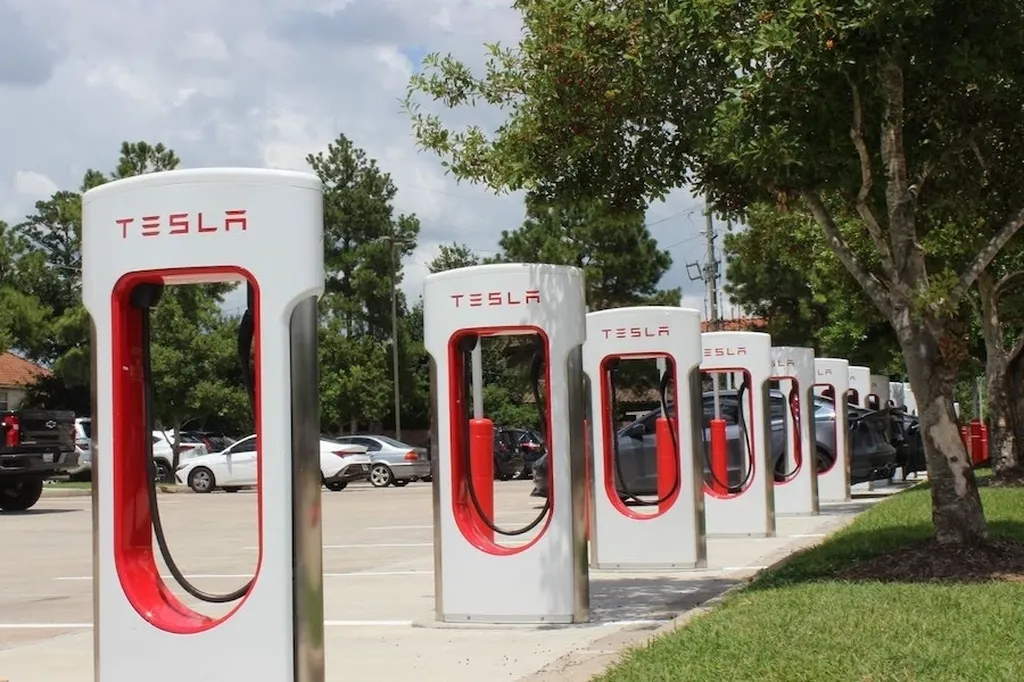In the rapidly evolving world of electric vehicles (EVs), the demand for efficient and scalable fast-charging stations is growing at an unprecedented pace. A recent study published in the *International Journal of Electric and Hybrid Vehicles* offers a promising solution to the challenges faced by large-scale EV fast-charging stations (EVFS). Led by Sai Bhargava Althurthi from the Department of Electrical and Computer Engineering at the University of Houston, the research proposes a novel multi-zone architecture that could revolutionize the way we think about EV charging infrastructure.
The study begins with a comprehensive review of existing EV charging station architectures, highlighting the predominance of common DC-bus configurations in current commercial sites. However, Althurthi and his team identified significant limitations in these architectures, particularly when scaled up to megawatt (MW)-scale EVFSs. “Most current EVFS implementations face challenges in terms of efficiency, fault tolerance, and grid impacts,” Althurthi explained. “Our goal was to develop an architecture that addresses these issues while maintaining the reliability and scalability required for future commercial applications.”
To overcome these limitations, the researchers proposed a multi-zone EVFS architecture that combines isolated and non-isolated DC-DC converter topologies. This innovative design maintains galvanic isolation for EVs, ensuring safety and compatibility with a wide range of vehicles. The proposed architecture is divided into multiple zones, each with its own isolated power conversion system. This zonal isolation enhances fault tolerance and reduces the risk of cascading failures, making the system more robust and reliable.
One of the key advantages of the multi-zone architecture is its superior performance in terms of efficiency and total power converter requirements. The study evaluated the system efficiency and power converter capacity of the proposed design and compared it with other EVFS models. The results were impressive, demonstrating significant improvements in efficiency and reduced power converter requirements. “The multi-zone architecture not only enhances the overall efficiency of the charging station but also reduces the capital and operational costs,” Althurthi noted. “This makes it an attractive solution for commercial EVFS operators looking to optimize their investments.”
The research also highlights the potential of the multi-zone architecture to reduce grid impacts. By intelligently managing the power flow between different zones, the system can minimize the peak demand on the grid and improve the overall stability of the charging infrastructure. This is particularly important as the number of EVs on the road continues to grow, placing increasing demands on the electrical grid.
The implications of this research are far-reaching, with the potential to shape the future of EV charging infrastructure. As the world transitions towards a more sustainable and electrified future, the need for reliable and scalable EVFSs will only continue to grow. The multi-zone architecture proposed by Althurthi and his team offers a promising solution to the challenges faced by current EVFS implementations, paving the way for a more efficient and resilient charging infrastructure.
In the words of Althurthi, “This research represents a significant step forward in the development of MW-scale EVFSs. By addressing the key challenges associated with current architectures, we hope to accelerate the adoption of EVs and contribute to a more sustainable future.” As the energy sector continues to evolve, the insights gained from this study will be invaluable in guiding the development of next-generation EV charging technologies.

